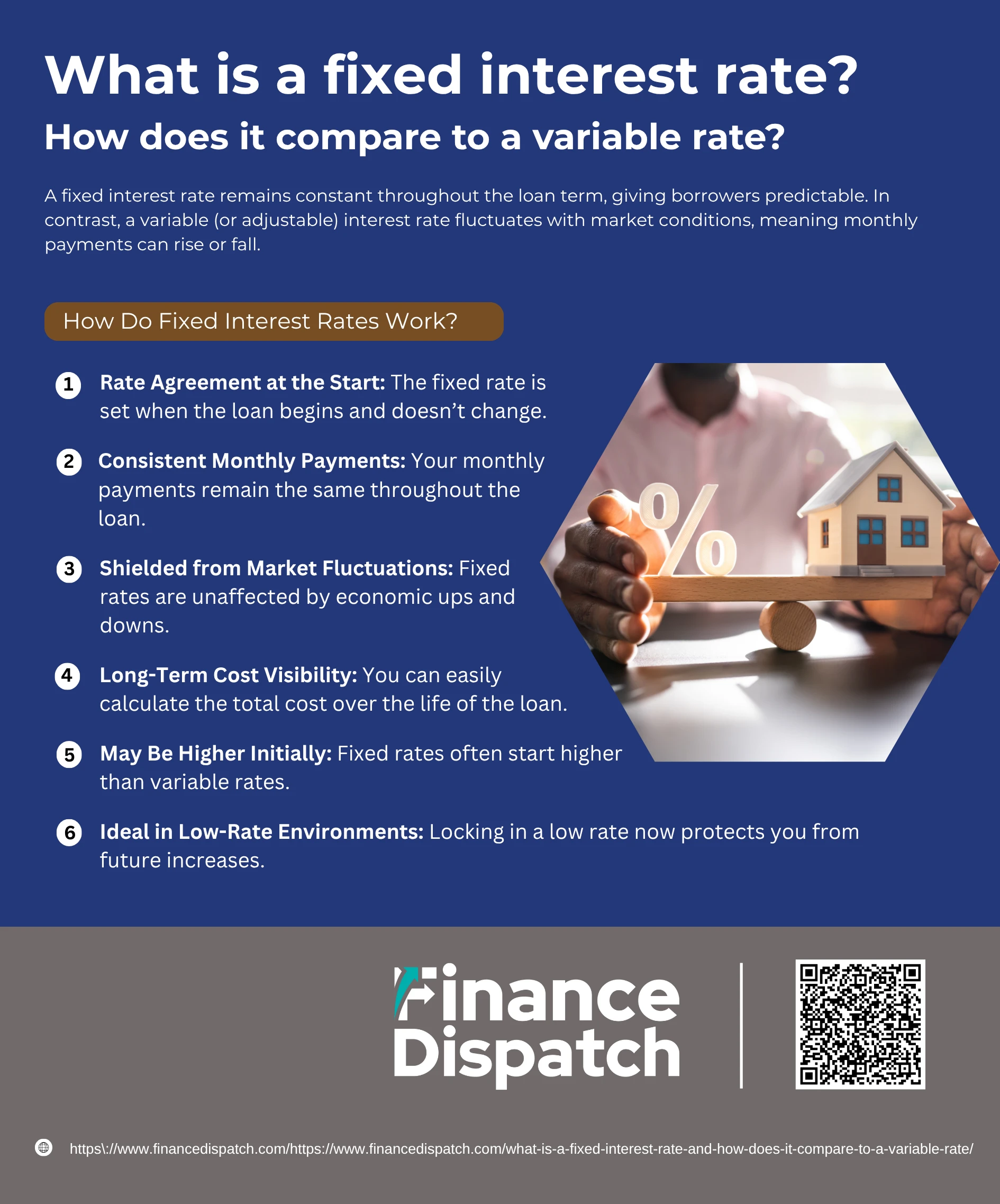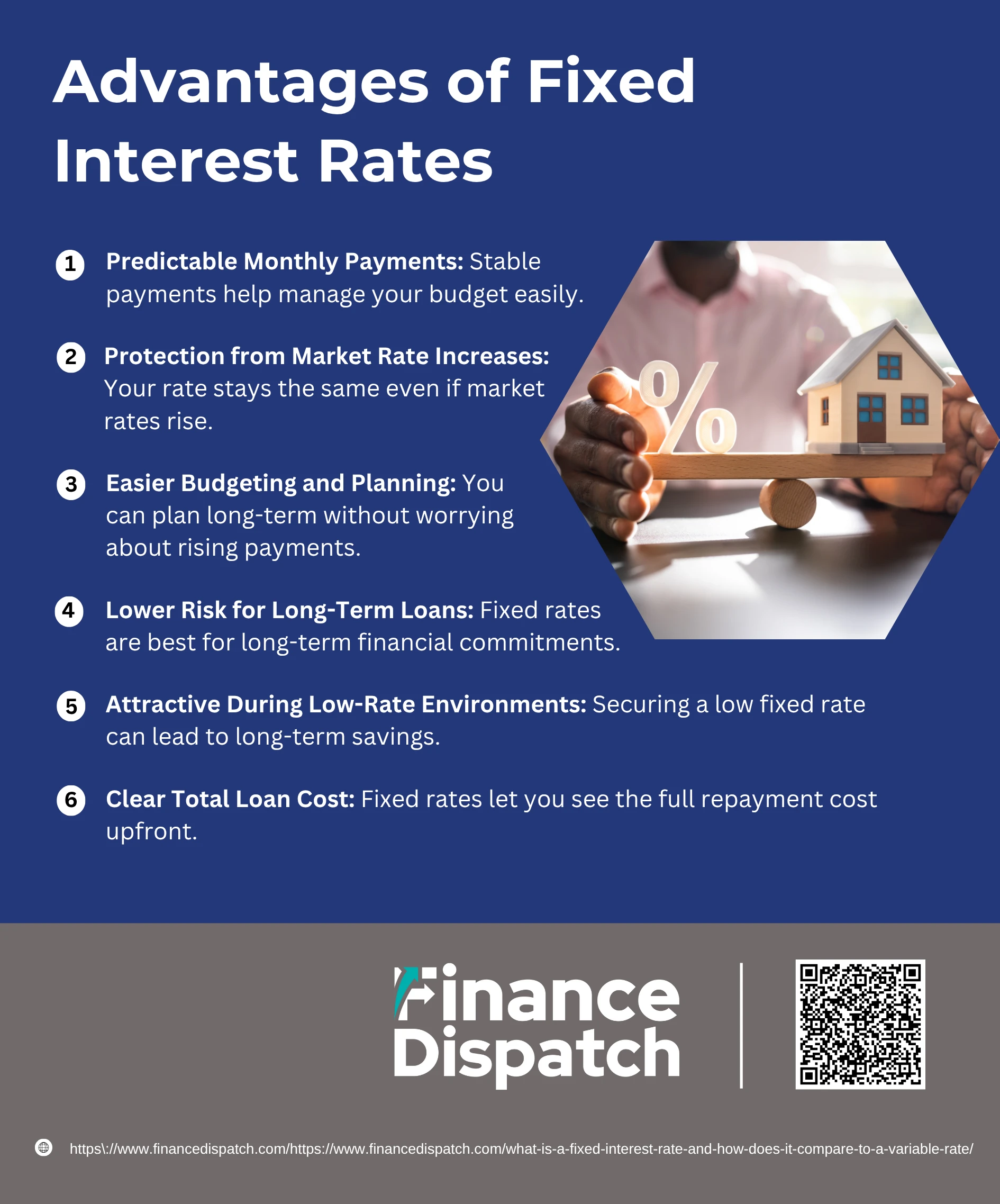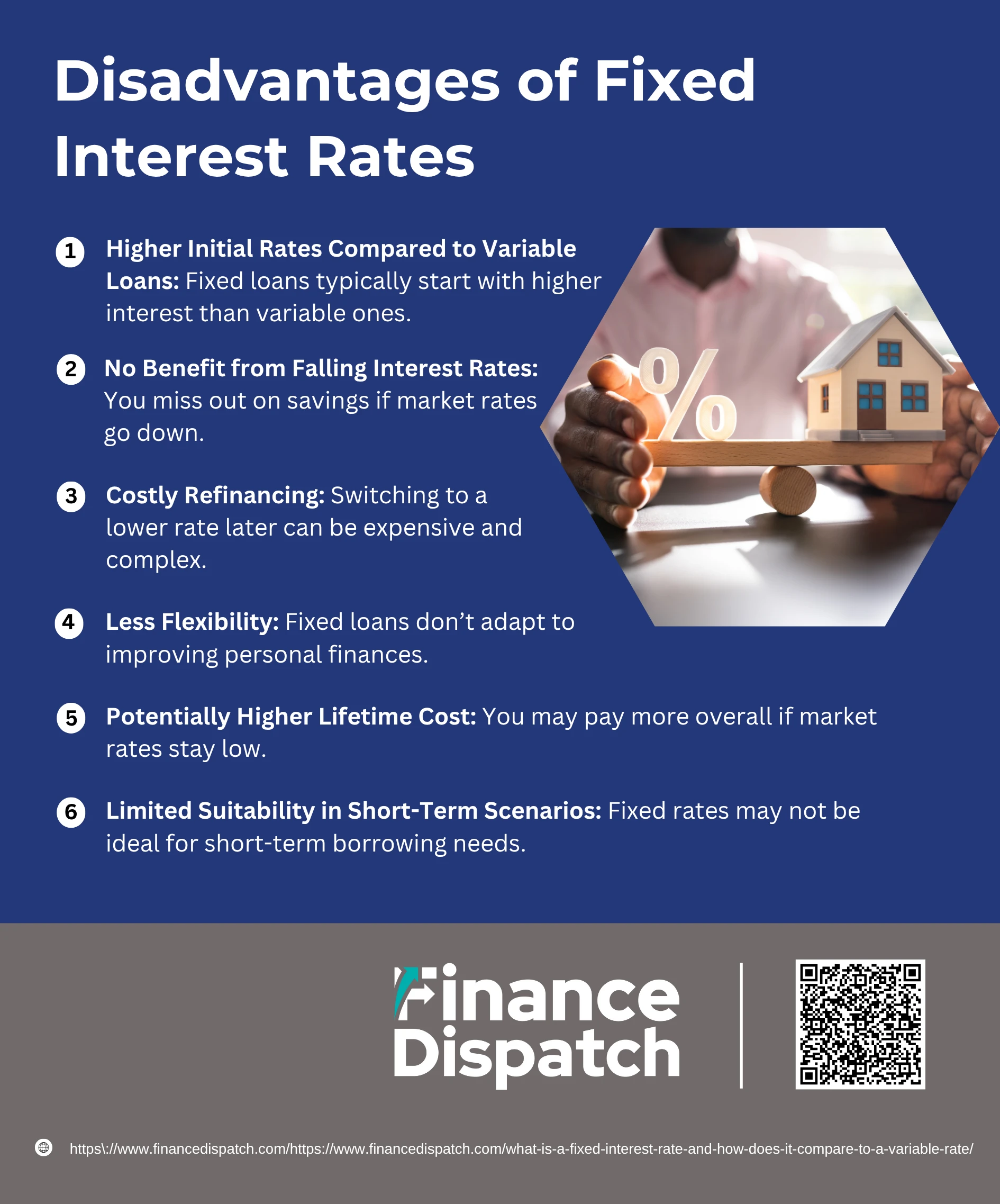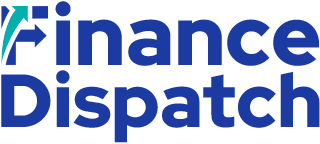When you borrow money—whether for a mortgage, car loan, or personal expense—understanding the type of interest rate attached to that loan is crucial. Two of the most common options are fixed and variable interest rates, each with unique advantages and trade-offs. A fixed interest rate offers stability and predictability, locking in your payment amount for the life of the loan. In contrast, a variable interest rate can fluctuate based on market conditions, which may lead to lower payments—or unexpected increases. In this article, we’ll explore what a fixed interest rate is, how it functions, and how it stacks up against a variable rate to help you make more informed financial decisions.
What is a Fixed Interest Rate?
A fixed interest rate is a type of loan interest that remains constant throughout the entire term of the loan or for a specified period. Unlike variable rates that fluctuate with market conditions, a fixed rate provides borrowers with the assurance that their interest charges—and consequently, their monthly payments—will not change. This stability makes it easier to budget and plan financially, especially over the long term. Fixed interest rates are commonly used in mortgages, auto loans, and personal loans, offering peace of mind for those who prefer predictable repayment schedules.
 How Do Fixed Interest Rates Work?
How Do Fixed Interest Rates Work?
Fixed interest rates provide a sense of financial security by ensuring that the rate you agree to at the beginning of your loan stays exactly the same for the entire term. This means your interest rate won’t rise—even if market rates go up—allowing you to avoid unpredictable increases in monthly payments. This makes fixed-rate loans especially appealing for borrowers who prioritize stability, need to manage tight budgets, or plan to hold the loan long-term. Whether you’re financing a home, a car, or consolidating debt, knowing how fixed rates function can help you choose the right loan option and avoid costly surprises.
Here’s how fixed interest rates work, step by step:
1. Rate Agreement at the Start
When you sign a loan agreement, the lender offers you a fixed interest rate based on current market conditions, your credit score, loan amount, and term. Once agreed upon, this rate is locked in.
2. Consistent Monthly Payments
Because the interest rate is fixed, your monthly payments remain stable. Each payment includes a portion for interest and a portion toward the principal, but the total payment amount does not change.
3. Shielded from Market Fluctuations
No matter what happens in the broader economy—whether interest rates rise due to inflation or fall during a recession—your fixed interest rate remains unaffected.
4. Long-Term Cost Visibility
With a fixed rate, you can easily calculate your total repayment cost over the life of the loan. This transparency helps with financial planning and setting long-term goals.
5. May Be Higher Initially
Fixed rates are often slightly higher than initial variable or teaser rates. Lenders build in this cushion to cover the risk that market rates might rise in the future.
6. Ideal in Low-Rate Environments
Fixed interest loans are especially advantageous when prevailing rates are low. Locking in a low rate now can protect you from increases in the years ahead, potentially saving thousands over time.
What is a Variable Interest Rate?
A variable interest rate, also known as a floating or adjustable rate, is a type of interest that can change over time based on market conditions. Unlike fixed rates, which stay the same throughout the loan term, variable rates are tied to a benchmark—such as the prime rate or a central bank rate—that fluctuates with the economy. This means your monthly loan payments may increase or decrease depending on how the benchmark rate moves. While variable rates often start lower than fixed rates, offering potential savings early on, they carry the risk of rising in the future—making budgeting less predictable. Variable interest rates are common in credit cards, home equity lines of credit, some mortgages, and personal loans.
Key Differences Between Fixed and Variable Interest Rates
When choosing a loan, understanding the difference between fixed and variable interest rates is essential. These two rate types affect not just your monthly payments, but also your ability to plan for future financial commitments. Fixed rates provide long-term stability, while variable rates may offer short-term savings but come with unpredictability. The right choice depends on your financial goals, risk tolerance, and the current interest rate environment.
Here’s a side-by-side comparison to help you better understand the key differences:
| Feature | Fixed Interest Rate | Variable Interest Rate |
| Rate Stability | Remains the same throughout the loan term | Changes based on market conditions |
| Monthly Payments | Predictable and consistent | May increase or decrease over time |
| Initial Rate | Usually higher than variable rate | Typically starts lower than fixed rate |
| Financial Planning | Easier due to payment stability | Harder due to fluctuating payments |
| Risk of Rate Increases | None – borrower is protected | High – payments can rise with rate hikes |
| Benefit from Rate Drops | No benefit – rate stays the same | Yes – lower payments if market rates decline |
| Best For | Long-term loans, risk-averse borrowers, stable budgeting | Short-term loans, rate-watchers, flexible budgets |
| Common Use Cases | Mortgages, auto loans, personal loans | Credit cards, HELOCs, adjustable-rate mortgages (ARMs) |
 Advantages of Fixed Interest Rates
Advantages of Fixed Interest Rates
Fixed interest rates are often favored by borrowers who value stability and long-term predictability in their finances. When you choose a fixed-rate loan, the interest you pay does not change, regardless of how the broader market shifts. This consistency allows you to plan your monthly expenses with confidence, knowing that your payments won’t suddenly increase. Whether you’re managing a mortgage, auto loan, or personal loan, fixed interest rates provide the security of steady repayment terms, which is especially helpful during times of economic uncertainty or when interest rates are expected to rise.
Here are the key advantages of fixed interest rates explained in more detail:
1. Predictable Monthly Payments
Because the interest rate is locked in, your payments remain the same throughout the loan term. This makes it easier to manage household budgets and avoid payment shocks that can come with variable-rate loans.
2. Protection from Market Rate Increases
If market interest rates rise after you take out your loan, your rate won’t change. This can save you a significant amount of money over time compared to borrowers with variable-rate loans whose payments may go up.
3. Easier Budgeting and Planning
With consistent payments, you can plan for future expenses like vacations, investments, or emergencies without having to worry about loan payment changes eating into your savings.
4. Lower Risk for Long-Term Loans
Fixed rates are ideal for long-term financing—like 15- or 30-year mortgages—where market rates have more time to fluctuate. They give you confidence that your cost of borrowing won’t rise over time.
5. Attractive During Low-Rate Environments
Locking in a fixed rate when interest rates are low allows you to benefit from historically favorable conditions, potentially saving thousands over the life of the loan.
6. Clear Total Loan Cost
Since your interest rate doesn’t change, you can easily calculate the total amount you’ll pay over the full loan term. This transparency makes it easier to compare different loan offers and avoid hidden surprises.
 Disadvantages of Fixed Interest Rates
Disadvantages of Fixed Interest Rates
Fixed interest rates provide valuable predictability, but that stability can come with trade-offs. While locking in a rate shields you from rising interest costs, it also means you may miss out on financial benefits if market conditions shift in your favor. In some cases, borrowers may end up paying more over time compared to those who take on the risk of a variable-rate loan. For people who anticipate changes in their income, plan to pay off a loan early, or expect interest rates to decline, fixed-rate loans may prove to be more costly or restrictive than flexible alternatives.
Here are the main disadvantages of fixed interest rates explained in more detail:
1. Higher Initial Rates Compared to Variable Loans
Fixed-rate loans often come with higher interest rates at the start than variable-rate loans. This is because lenders include a risk premium to protect themselves against future rate increases, meaning you could pay more in the early years of the loan.
2. No Benefit from Falling Interest Rates
If interest rates drop after you take out your fixed-rate loan, you’re stuck with your original rate. Unlike variable-rate borrowers, you won’t benefit from potential savings through lower monthly payments or reduced overall interest costs.
3. Costly Refinancing
The only way to take advantage of a lower rate after locking into a fixed loan is to refinance. Refinancing can involve application fees, closing costs, new credit checks, and time-consuming paperwork—making it a less convenient and more expensive path to savings.
4. Less Flexibility
Fixed-rate loans don’t adjust to your changing financial circumstances. If your credit improves or your financial situation becomes more favorable, you won’t automatically qualify for better loan terms without refinancing.
5. Potentially Higher Lifetime Cost
Over the entire life of the loan, you might end up paying more in total interest compared to a variable-rate loan—especially if market interest rates remain low for an extended period.
6. Limited Suitability in Short-Term Scenarios
Fixed interest rates are generally better suited for long-term commitments. If you plan to repay your loan within a short period or expect to refinance soon, the higher upfront cost of a fixed-rate loan may not provide enough value to justify the stability it offers.
When Should You Choose Fixed vs. Variable Rates?
Deciding between a fixed or variable interest rate depends on your financial goals, tolerance for risk, and expectations for future market conditions. Fixed rates offer security and consistency, making them ideal for those who want predictable payments. Variable rates, on the other hand, can offer initial savings but come with the risk of payment increases. By understanding your personal situation and the current economic climate, you can make a more informed decision about which rate structure best suits your needs.
Here are some scenarios where one option may be better than the other:
1. Choose a Fixed Rate if:
- You want predictable, consistent monthly payments
- You have a tight or fixed budget and can’t risk payment increases
- You’re taking out a long-term loan, such as a 15- or 30-year mortgage
- Interest rates are currently low and expected to rise
- You’re risk-averse and prefer financial stability over potential savings
2. Choose a Variable Rate if:
- You can tolerate payment fluctuations and have flexible finances
- You expect interest rates to remain stable or decrease
- You plan to pay off the loan quickly or refinance in the near future
- You want to benefit from lower initial interest costs
- You’re confident in your ability to adapt to potential increases in monthly payments
Real-World Example: Fixed vs. Variable Loan Cost Comparison
To understand how fixed and variable interest rates impact your total loan cost, let’s consider a practical example. Imagine you take out a $100,000 loan and are offered two options: a fixed interest rate of 5% over three years, or a variable interest rate of prime + 2%, where the prime rate is expected to fluctuate over time. With the fixed-rate loan, your interest payments remain steady at $5,000 per year, totaling $15,000 over three years. In contrast, with the variable-rate loan, your interest cost may change each year depending on the prime rate. If the prime rate rises over time—as projected—you could end up paying more. For instance, you might pay $4,000 in the first year, $6,000 in the second, and $8,000 in the third, totaling $18,000. In this scenario, the fixed-rate loan would save you $3,000 and offer greater payment certainty. This example highlights how choosing a fixed or variable rate can significantly affect both your budget and long-term costs.
Conclusion
Choosing between a fixed and variable interest rate is a crucial decision that can shape your financial stability over the life of a loan. Fixed interest rates offer predictability and peace of mind, making them ideal for borrowers who value consistency and want to avoid surprises. Variable interest rates, while potentially more cost-effective in the short term, come with the risk of increasing payments if market rates rise. The best choice depends on your financial goals, risk tolerance, and the current interest rate environment. By understanding how each option works and evaluating your personal situation, you can make a more informed decision that supports your long-term financial well-being.



